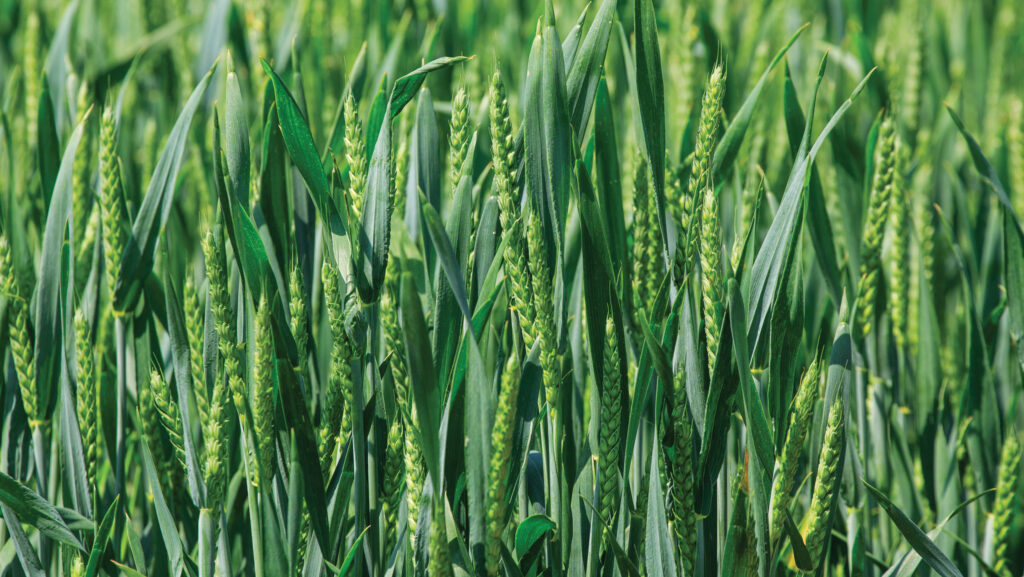Biostimulants show wheat yield promise under low nitrogen use
 © Tim Scrivener
© Tim Scrivener Results from a three-year independent study revealed the use of biological products had a greater impact on winter wheat yield and margin where a lower nitrogen rate was applied.
Efforts to reduce reliance on synthetic nitrogen fertiliser continue to be a key driver of biological product interest.
See also: Why wheat variety blends will prove their worth in 2026
Crop research organisation Niab carried out the work to explore whether a range of biostimulants could increase crop yield and margin, while reducing reliance on artificial nitrogen.
The results carried out across two sites in Dorset and Kent revealed that biostimulants can indeed enhance yield where a lower nitrogen rate is applied, but their benefits fade as fertiliser rates increase.
Trial overview
The Niab trials investigated several commercially available biostimulants, including NP PGA, Blue N, Twoxo, T6P, and Tarbis, applied at multiple timings from grow stage 30 to GS61.
Treatments were tested under two nitrogen regimes (150kg/ha and 220kg/ha) at both the Dorset and Kent sites.
Each programme was compared against an untreated control to assess effects on yield, specific weight, and overall margin over input cost (Moic).
Beneficial yield response with 150kg N/ha
All biostimulant products resulted in a positive effect on grain yield under low-fertiliser inputs at the site in Kent, which resulted in greater margin over input cost for each, when compared with the control.
The NP PGA biostimulant saw the greatest yield response of 0.55t/ha, which corresponded to the greatest improvement in margin over input cost of £73/ha.
This was followed by Twoxo and Blue N, with improved margin over input costs by £54/ha and £45/ha, respectively.
At the higher nitrogen rate of 220kg N/ha, yield increases were less prominent with only Twoxo bringing in an improved margin over input costs of £2/ha greater than the 220kg N/ha control.
The overall best performing Moic was NP PGA at 150kg N/ha at £1,565/ha.
At the Dorset site, all biostimulant products excluding Blue N had positive effects on grain yield when compared with the control under low fertiliser inputs, but the effects were statistically not significant (averaged over three years).
Due to the non-significant yield increase, there was no benefit on margin over input cost compared with the control in any of the biostimulant trial plots.
The biostimulants Tarbis and Twoxo had positive effects on grain yield under low fertiliser inputs, with a minor dip in the margin.
Similarly, the higher fertiliser rate of 220kg N/ha revealed there to be no improvements to Moic compared with the control.
Biostimulant effects stronger at Kent site
Although nitrogen drove yield, several biostimulants showed positive effects under low-N conditions, particularly at the Kent site.
Products such as NP PGA, and Twoxo consistently produced higher yields than the untreated control when nitrogen was restricted to 150kg/ha.
However, when nitrogen was increased to 220kg/ha, these yield differences disappeared.
None of the biostimulants added measurable benefit beyond what higher fertiliser rates already provided.
Stronger biostimulant effects were observed in Kent, while the impact in Dorset was minimal, underscoring the influence of soil type and weather conditions.
The Dorset site was more fertile and received more rainfall than the Kent site over the three-year trial period.
Although the higher nitrogen rate (220kg/ha) consistently increased yield at both locations, the biostimulant response was specific to each site.
Specific weight showed a slight improvement with biostimulant use, particularly at lower N rates.
Economic return
Economic analysis highlighted the importance of context. At the Kent site, the best Moic came from NP PGA applied under 150kg/ha N, outperforming both the untreated control and higher N-rate programmes in terms of financial return.
In contrast, where yields were already maximised by higher nitrogen rates, biostimulants added cost without clear payback.
This underscores a key point: biostimulants appear most useful as tools to enhance nutrient use efficiency when fertiliser inputs are constrained, rather than as substitutes for well-optimised agronomy.
Optimising nitrogen management and crop timing remains far more influential than any foliar additive.
As ever, their economic return depends on both the cost of the product and the level of nutrient stress.
Biostimulant product and function used in trial |
||
|
Product |
Active ingredient and concentration |
Manufacturers’ claims |
|
Blue N |
Bacteria: Methylobacterium symbioiticum |
Improves nitrogen use efficiency |
|
NP PGA |
N, P, K, Mn |
Improves rooting |
|
T6P |
Trehalose-6-phosphate as a signalling molecule |
Improves root and shoot development |
|
Tarbis |
Endophyte-based bacterial product |
Improves rooting and nitrogen use efficiency |
|
Twoxo |
2 Oxoglutaramate (Twoxo) |
Improves nitrogen use efficiency |
Timing and rate of biostimulant product applied |
||||
|
Treatment |
TO (GS30) |
T1 GS31/32 |
T2 (GS39) |
T3 (GS61) |
|
1 |
Untreated |
Untreated |
Untreated |
Untreated |
|
2 |
N PGA (0.5 litres/ha) |
N PGA (0.5 litres/ha) |
No product applied |
No product applied |
|
3 |
No product applied |
Blue N (333g/ha) |
No product applied |
No product applied |
|
4 |
No product applied |
Twoxo (1litre/ha) |
Twoxo (1litre/ha) |
No product applied |
|
5 |
No product applied |
No product applied |
T6P (1litre/ha) |
T6P (1litre/ha) |
|
6 |
Tarbis (1litre/ha) |
Tarbis (1litre/ha) |
No product applied |
No product applied |
|
7 |
NP PGA (0.5 litres/ha) |
Tarbis (1litre/ha) |
Twoxo (1litre/ha) |
T6P (1litre/ha) |
Broader crop responses: Beans, oats, maize and root crops
Niab has also extended its research into other arable and root crops, including winter beans, oats, maize, potatoes, and fodder beet.
In maize and winter beans, Vixeran and Blue N produced the most consistent positive responses, with yield increases of up to 0.3 t/ha in beans.
In the winter bean trials, although all treatments outperformed the untreated control (2.99t/ha), the differences were not statistically significant. The highest yield (3.29t/ha) came from Blue N applied at mid-flowering.
Vixeran applied at early flowering also performed well at 3.21t/ha, slightly outperforming its mid-flowering application.
Poly N was the least effective; even its mid-flowering application produced only a small increase over the control.
For cereals and root crops, responses were again dependent on background fertility and growing conditions.
Vixeran and Blue N had significant positive effects on grain yield in maize and winter beans.
T6P had a positive effect on the yield of winter oats. NP PGA, amino acid-based biostimulants such as Zonda, Bridgeway and Amino A Flo had positive effects on sugar beet and potato yield.

